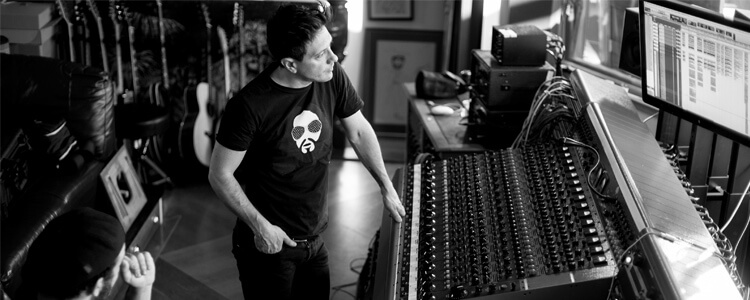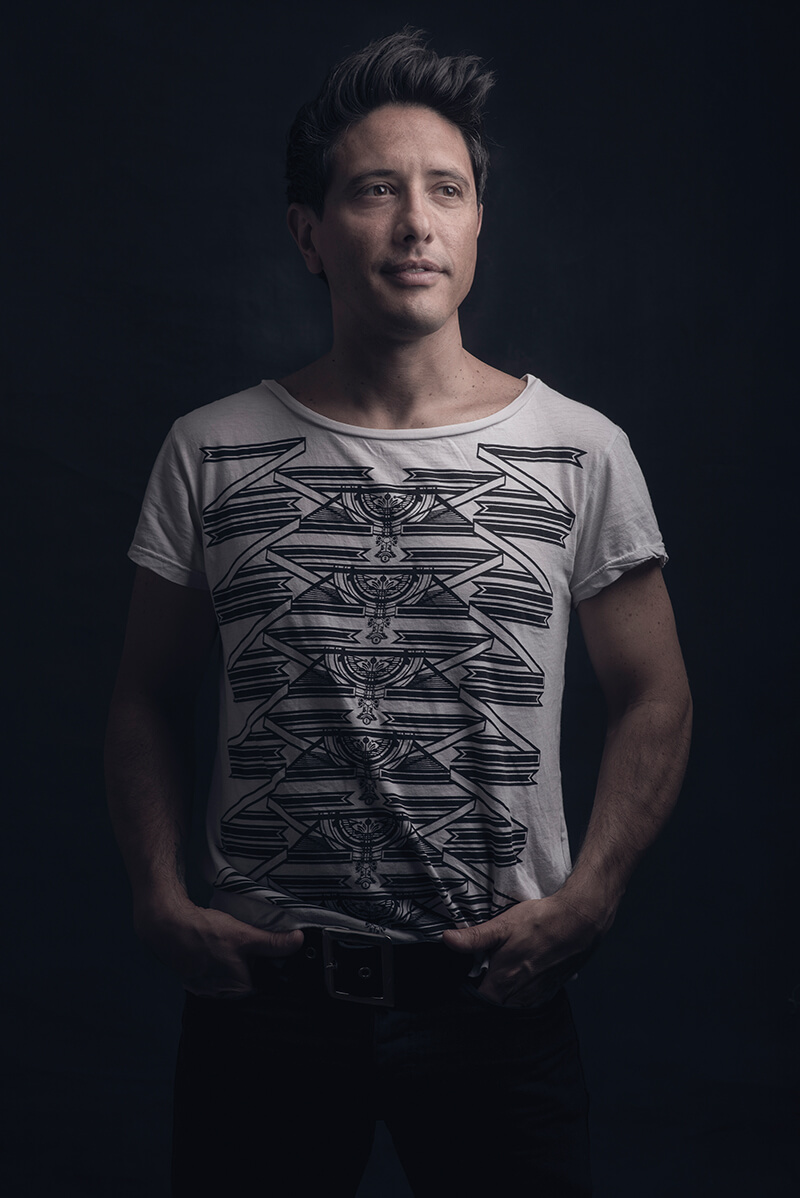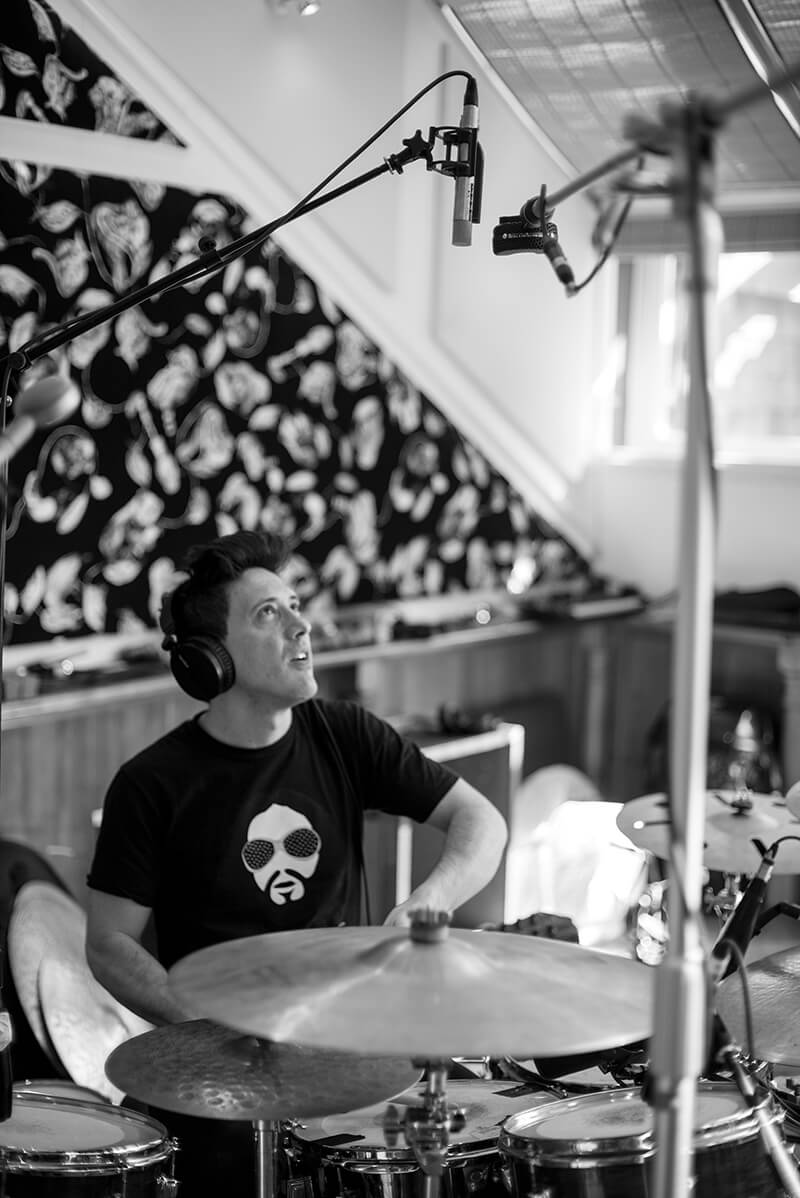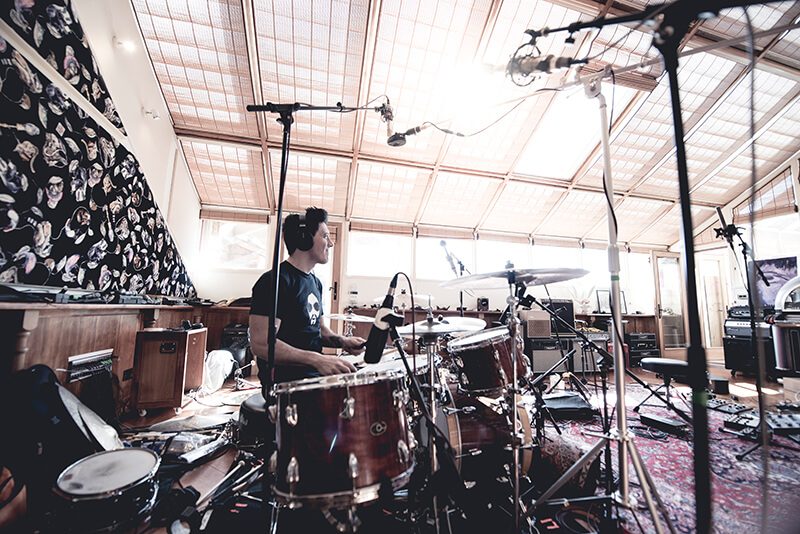Javier Weyler Interview – Breaking Waves
Stereophonics drummer, solo artiste, audio engineer… it’s fair to say Javier Weyler has packed a lot into his 43 years. We speak to Javier about his recording ethos and his recent work on the epic documentary, Antarctica: A Message From Another Planet… Getting your room sounding right, and appropriately mic’ing up your instruments – particularly […]

Stereophonics drummer, solo artiste, audio engineer… it’s fair to say Javier Weyler has packed a lot into his 43 years. We speak to Javier about his recording ethos and his recent work on the epic documentary, Antarctica: A Message From Another Planet…

Getting your room sounding right, and appropriately mic’ing up your instruments – particularly the drums – is something that we frequently stress here at MusicTech, but we were taken aback by the levels of detail that Javier Weyler and the Breaking Waves Agency went to when recording the percussion-heavy music for the new documentary Antarctica: A Message From Another Planet.
Using a raft of high-quality microphones, Javier and his crew sought to create some of the most interesting, rhythmic music ever heard, while also taking a holistic view of the sound design of the film as a whole. Born in Buenos Aires, Argentina, Javier’s route to establishing the sound design agency came after eight years as the drummer for one of the UK’s most prominent bands, the Stereophonics.
But Javier’s passion for music began at a very young age:
“I started playing when I was 13,” Javier tells us. “My dad played music in Argentina during the 60s and so I learned drums fairly early: I was hooked. When I was 15 years old I was playing professionally with a band [Claroscuro]. This was the early 90s and I was with them for like 11 years and we did a few records.
I was studying media and film as well during that time. I started learning more about production too and I moved to London to really study sound engineering and production in more detail. I went to SAE and as soon as I finished there I started working in a post-production house. I also worked in a studio called BJG which, unfortunately, does not exist anymore.”
You gotta go there to come back
So how did this lead to becoming the Stereophonics’ drummer, through a highly successful period of their career?
“During my time in that studio I got a taste of professional production work,” he says, “including a few recordings with some big name artists. That’s how I started to get to know the guys from the Stereophonics, as they’d come in to record demos. So we became good mates.
“I ended up playing percussion and assistant engineered on a few of the final tracks of the fourth album. When they came back to write and record the fifth album, their drummer Stuart Cable wasn’t in the band anymore and so there was a vacancy. They’d finished their tour with the drummer from The Black Crowes. So I was there and once again recorded all the drums for the demos – I practically lived in that place at the time.”
Javier tells us that, “Even though we knew each other as friends, we’d never played together live, but it was great. For that fifth record – Language. Sex. Violence. Other? – we wrote a tonne of songs together [including the No 1 hit, Dakota, which became the band’s biggest single in the UK] and I recorded all the drums for that album.
“After that album was done we kept in touch. Whilst mixing it, they asked me to join and perform live with them, and so before I knew it, I was the drummer in the Stereophonics! I spent around eight years in total with the band. We did a few more records. During that time I kept myself busy and was still very involved with production, and I made a solo record at the time too.”
Javier left the ‘Phonics in 2012, and established his sound design/audio business, Breaking Waves. Javier tells us of the ideas behind its origin: “Well, while I studied film back home, I’d yet to find an avenue where I could combine both film and music.
“While I was doing some work with a band, I managed to get a gig composing a soundtrack for a South American film, concerned with wind surfing. I started getting more and more involved with the film’s sound and thinking about the post-production of it in more detail. I ended up doing pretty much everything – all the sound design, post-production and the composing.”
Javier says that this was the first big project that he did where he thought, ‘Wow, this is perfect.’ “I got to create new music and also got to be quite hands-on with the film’s sound too.
“So that’s when I had the idea of the Breaking Waves Sound Agency, to help people who work in film, TV, audiobooks and other creative industries get tailored sound services for their projects. We offer sound design, music, post-production – basically everything under one roof.
“The idea is to treat sound as music – and really the whole audio mix of the project needs to reflect this, even down to dialogue and narration. If you have all these things well-balanced and supervised from one audio-creative’s point of view then the end result is much more efficient. We do campaigns with advertisers quite a lot and collaborate with many different directors.”
A creative approach is needed then from the very beginning. “Our approach is to sit down with a person and really understand their needs and the essence of the project. It can take time – but I much prefer to be involved rather than doing stuff remotely.”
Microphones used
- AKG D12VR
- Shure SM7
- Sennheiser MD421
- Neumann Gefell CMV-563 with M7 capsules
- Aston Starlight
- Coles 4038
- Royer Labs SF-24V
- Soyuz SU-017
- Aston Spirit
- RFT CM7151 with M7 capsule and external power supply by
- Nick Mann
- AEA R84
Baby, it’s cold outside

A good example of Breaking Waves’ creative approach is their latest recording work for the documentary Antarctica: A Message From Another Planet.
“When they approached me they already had some other sound that was a little too obvious I thought. The project is a documentary that explores the human presence in Antarctica. It’s really fascinating, Antarctica is a hotly contested area with lots of different governments and groups debating over who owns what part of it, but many nations are co-operating together when they go there and work scientifically.
“The documentary makes you question what you think you know. When it came to the music, they wanted something quite epic and big, but they wanted it to have a rocky element, with lots of rhythms and that sort of thing. I said to them, ‘OK, well let’s try to really use drums as the main instrument.’ So I went to town on capturing drums with different mic placements and in different rooms, so we had a real palette of drum sounds, and quite natural ones as opposed to plug-ins.”
“Our mixes were quite full-on too,” Javier says. “We’d have different drum tracks panned to different areas of the mix. It was like putting together a drum orchestra!“
Aptly, the son of the most famous drummer in pop history was on hand to help:
“We went to Zak Starkey’s place to do a lot of the recording, as he’s just installed a Tree Audio Roots console. I brought all my vintage microphones and we tried a few different ones we’d not used before (as we want to establish a few decent workhorse mics for future projects too). So we had loads: including some Neumann Gefell mics, some AEA R84 ribbon mics, some Coles 4038 microphones, as well as some Royer mics.
“The guys from Soyuz let us try one of their microphones as well, which are really great. Aston Microphones gave us the Starlight. It was great to have the time to actually experiment and compare a range of different microphones. We took a great deal of care tuning the instruments and getting the placements spot on.
Obviously we did some close-mic’ing. But really my idea was to blend – obviously one microphone couldn’t capture the whole drum sound. With the range of mics used, all set up in various points, we had the whole situation under control and could compare tonalities easily.”
Getting everything sounding right was a delicate balance, as Javier explains:
“Well, the final mix was quite a balancing act to get the drum sounds perfect. Obviously we wanted a bit of snare and a bit of kick with closer mics. I was blown away by the Royer Lab’s microphones. They were incredible in terms of the frequency response.
“They make such natural and transparent mics. I do think that overall we created our sound using a combination of all the different microphones. It wasn’t just a matter of A/B testing, as some sounded better in certain places.”
Though the homegrown Aston Starlight was a notable standout, “When we put the Aston Starlight on the snare, it was fantastic and as an overhead it was even better!” he enthuses.
“I was totally blown away by that little mic because I wasn’t really expecting such a musical sound to come from a pencil condenser. I’ve always been a big diapraghm sort of guy when it comes to microphones. Switching between the different EQ’s happened so quickly. On the snare we used the middle position of the Starlight to get a slightly more bright sound.
“That worked great on the snare. Whereas for the overhead position the sound was better when it was set to the vintage tone. Being able to do that with just one small mic was pretty amazing. It’s my new workhorse mic.”
Javier tells us that, “The overall idea really is that we were EQing the kit just by placing the mics around the room, so our input sound was pretty perfect. We recorded with no actual EQ and limited gain on the preamps as, fundamentally, we were all about capturing the best sound in the room really. We took care of three-dimensional space. You can get really geeky with it – but if you think about the science of sound, where things are and how to let the sound develop then you end up with a much better sounding result.”
Spanish retreat

“When we went to Playground Studio in Spain to start mixing the tracks, we quickly recorded a few things there and we did some vibraphone layers as well, which we captured with the Starlight,” Javier tells us, before attention was finally turned to the mix, though due to the quality of the recording… “We didn’t use that much software, a few things here and there.
“It was mainly just a matter of placing our recordings in the 5.1 spectrum. I found it very interesting – most of the time in music we work in stereo, so working with all these different channels is always a creatively interesting challenge. It was very interesting to play around with the image. Creatively speaking, I was keen on this project to not really play by the rules.”
Javier says that he had, “One track which had four different drum parts, all contrasting with each other. What was interesting was when, in the 5.1 mix, I placed a drum track in the front left and right stereo speakers, and then another drum part in the rear speakers so it sounded like it was coming from behind.
“Then I’d have another drummer on the extreme left hand side, and one on the extreme right hand side of the surround mix. So it’s like – if you’re in the middle of the room, you’re totally in the centre of this epic drum heavy mix. For all the songs we prioritised, the main drumming part and the other ones would alternate or bolster that main part, to reinforce it.”
But it wasn’t just about music, as Javier explains: “We had to think about the dialogue as well, we needed to make sure that stuck out of the mix clearly. We didn’t want to overwhelm it – but by the same token we didn’t want to downplay the music so much that it wouldn’t be heard. Bearing those things in mind, composing actually worked really well. You’re not trying to step into someone else’s shoes all the time.”
The final documentary is nearing completion, and should be available to watch soon.
“It’s still in post-production at this stage,” he tells us. “It wasn’t made for a particular network as it was made as an independent documentary that will be shown at many festivals. The hope is though that it’ll be picked up by a network. I’ve actually just finished doing another documentary too, that was actually a commission from a TV network.”
The Antarctic Explorer
Antarctica: A Message From Another Planet is currently nearing completion and should be ready later this year…
[Modula id=’30’]
Changing Landscape
Javier, as a music industry professional – thinking creatively and making interesting music for a living – offers the following advice to those looking to have a similar career:
“You have to be really, really sure that this is something that you love. There are loads of people who have the misunderstanding that you’ll make loads of money out of a career in music production and music making, but that’s no longer the case and it hasn’t been the case for a long time. Your attitude should be focussed on the music primarily, and the creative process.”
Javier goes on to say that, “I think that if you really have a craft and a career path that you want to follow, you can learn as much as you want from a book or tutorials, but actually doing it yourself is the key. I never had any help when I was growing up and getting into music.
“I sat down with a tape machine and learned the wrong way, you know, messing up a bunch of times and learning the hard way each time. I love working with young people and then when they try different things they say to me, ‘Wow, I didn’t know you could do this that way.’
“I’m trying to say to them that they can do anything and approach music their own way. So I would say to people who really want to get into it, do you research and really try to figure out your own ways of making music. It’s a craft, like being a painter, or a sculptor. Any of those things take time to develop. You get better with time and get better with experience.
“It’s sad that we don’t have the studios that we had in the past, and also the music production landscape has changed,” Javier explains. “Also I’d say you should look back at classic records – there’s a reason those records sound the way they do. No distractions – no phones and no apps – so sometimes restricting yourself can be a benefit. Back then, people were just purely into the music making.”
In summation then, Javier states a quite simple truth:
“You could have the best preamps in the world, and the best gear in the world in the best studio in the world, but you play like shit it’s going to sound shit! You can’t expect for the engineer to make you sound amazing. There’s a lot of that going on sometimes in people’s perceptions – and it’s a shame because it disrespects the craft of music making. It takes a lot of work.”